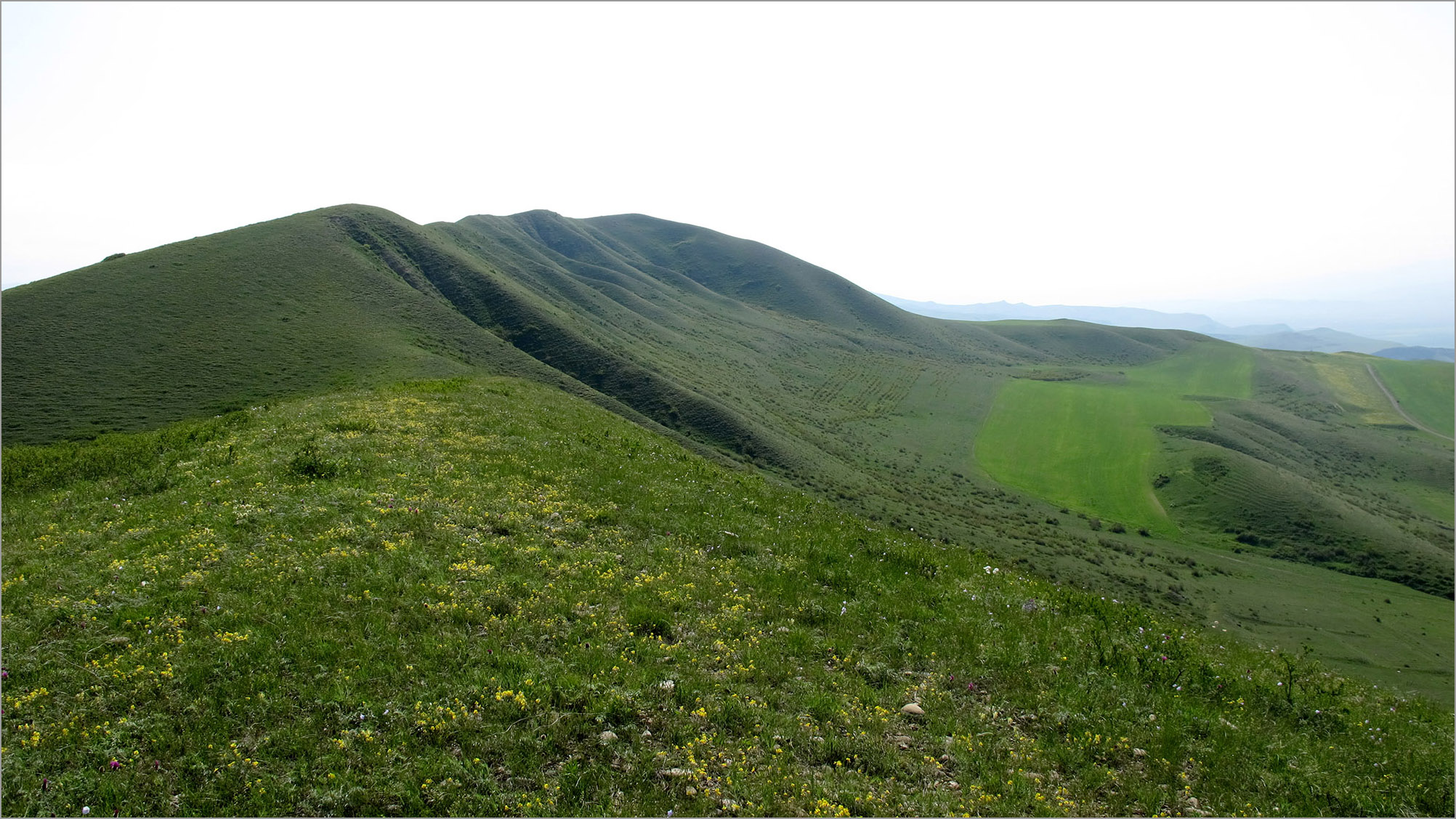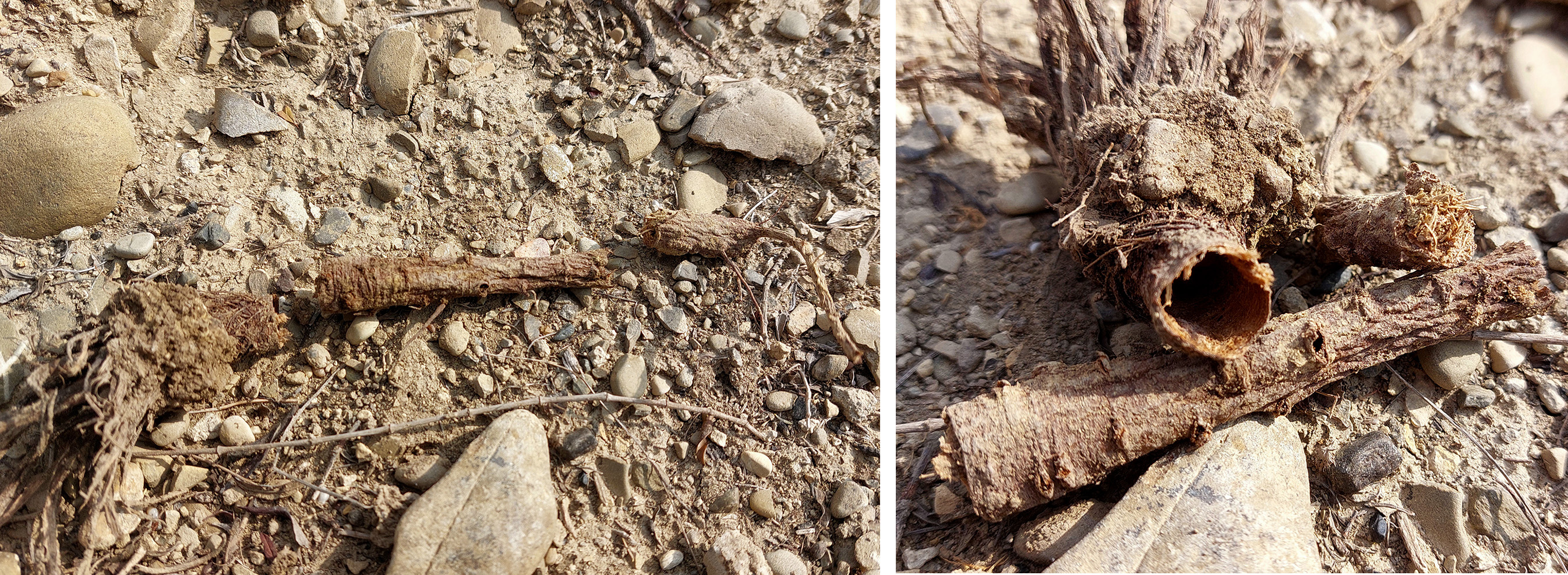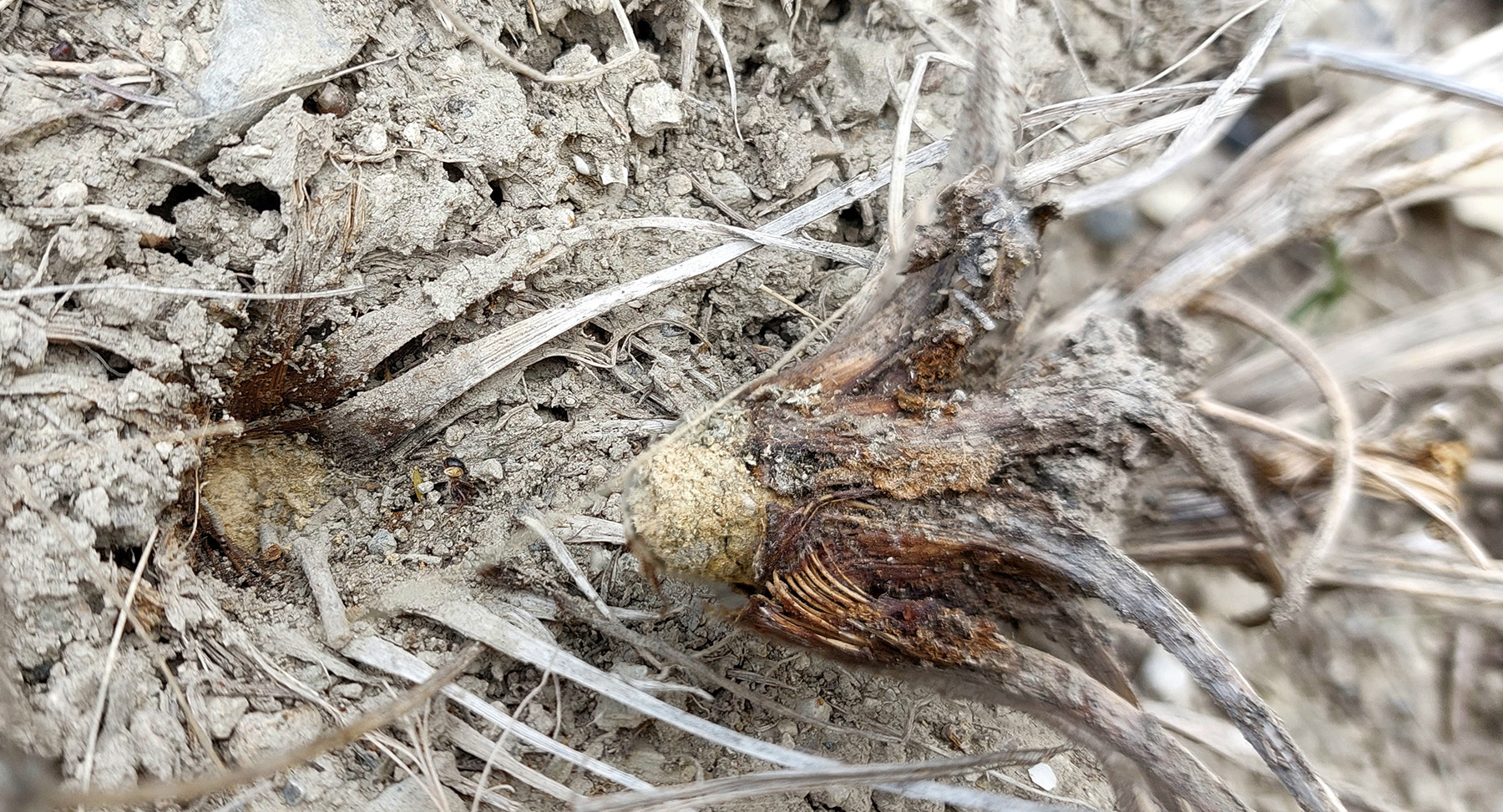biology
During the 2022 autumn expedition to Georgia, our friend Petr Papoušek successfully clarified the hitherto unknown biology of the rare Phytoecia (Coptosiella) antoniae Reitter, 1889. His findings can be summarized in a few points:
- development takes place in a so far undetermined plant from the Apiaceae family;
- the larvae feed on the roots and in most cases pupate deep in the ground (the root can be 30-40 cm long) - when searching, you must be prepared to dig in difficult terrain;
- before pupation, the larva girdles the root even under the pupal cell, it has never been possible to pull out the root intact with the pupal cell (usually a 3 cm long "stick" with the pupal cell cocoon remained in the ground);
- part of the population overwinters as an adult, part as a praepupa that hibernates until spring;
- it can be concluded that P. antoniae has a one-year development (only adults/larvae were found in the pupal cells, the root of the host plant decomposes relatively quickly and already disintegrated in November, it is not possible that the larva could develop in it for another season).

[Photo © Lubor Havlík]
A locality of Phytoecia (Coptosiella) antoniae Reitter, 1889: Meadows and pastures 4 km NE of Gori (N42°00′28″ E44°9′37″; 950-1050 m a.s.l., Shida Kartli region, Georgia).

[Photo © Petr Papoušek]
November appeareance of the undetermined Apiaceae plant whichs serves as a host plant of Phytoecia (Coptosiella) antoniae Reitter, 1889 (Gori environs, Shida Kartli region, Georgia).

[Photo © Petr Papoušek]
Roots of the host plant attacked by Phytoecia (Coptosiella) antoniae Reitter, 1889 (Gori environs, Shida Kartli region, Georgia). The cocoons with pupal cells are hidden in the smallest right/upper parts of the root clogged with shavings.

[Photo © Petr Papoušek]
Infested host plant's root after breaking off the upper aerial part.

[Photo © Petr Papoušek]
Cocoons with pupal cells of Phytoecia (Coptosiella) antoniae Reitter, 1889 (clogged by shavings).
